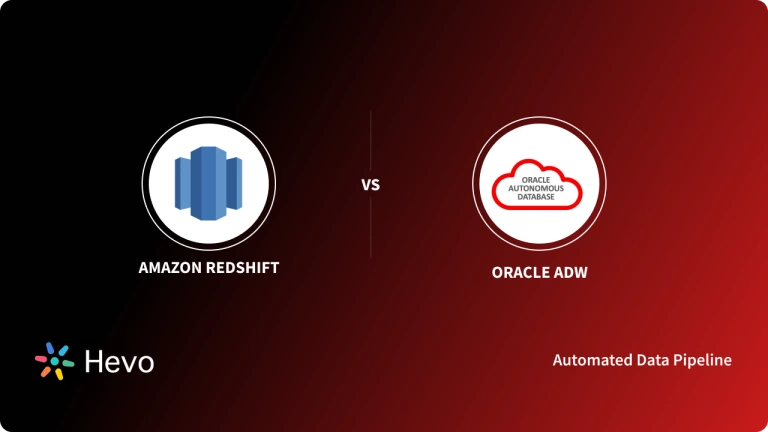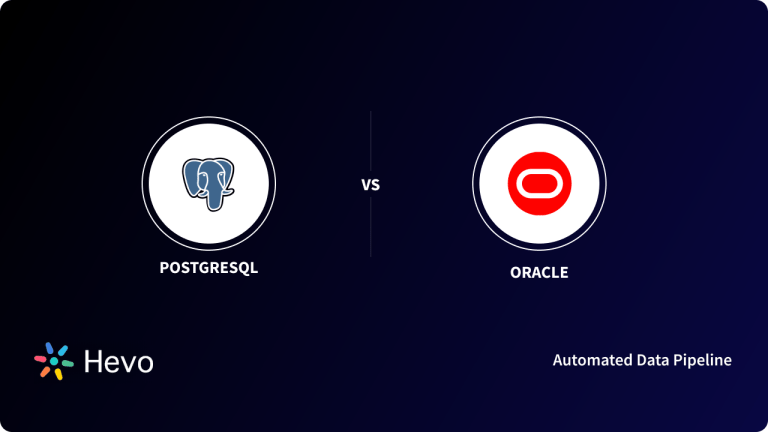In Today’s data-driven modern world, competition between companies is prevalent when they offer similar products. In a competitive market, providing the best services and products and having the majority of customers for a particular product does help shape a company’s profit. When it comes to Database Management, the choice of Oracle vs Teradata is a relatively tough one.
In this article, we compared two databases that may help you decide which to choose for your business operations. We have also listed a few parameters to distinguish them.
Table of Contents
What is Teradata?
Teradata is an open-source Relational Database Management System (RDBMS) managed and owned by Teradata Corp. Teradata architecture is built around Massive Parallel Processing, and hence it is widely used for creating large-scale data warehousing applications. Teradata is a massively open processing system that supports Unix/Linux/Windows server platforms.
Navigating data from different sources like Oracle can be challenging. Hevo supports 150+ data sources(60+ Free Sources) for seamless integrations. Leverage Hevo’s powerful platform to efficiently manage and analyze your data.
- Seamless Integration: Connect your source effortlessly with Hevo’s no-code platform.
- Enhanced Insights: Simplify reporting and gain deeper insights from your analytics data.
- Efficient Management: Streamline your data operations with ease and accuracy.
Join over 2000 satisfied customers, including companies like Cure.Fit and Pelago, who trust Hevo for their data management needs. Explore our capabilities with a free personalized demo and see how you can benefit.
Get Started with Hevo for FreeOracle vs Teradata
Teradata and Oracle are both RDBMS systems and support ANSI SQL to interact with the data. Both Teradata and Oracle have lots of similarities, but they also have some differences. Below is a list of key differences between Teradata and Oracle:
| Aspect | Oracle | Teradata |
| Architecture | Multi-model database; optimized for OLTP and OLAP; uses shared-disk model. | Massively Parallel Processing (MPP) architecture optimized for large-scale data warehousing. |
| Mode of Operation | Primarily designed for transactional processing with strong OLAP features. | Specializes in data warehousing and analytics with batch and real-time capabilities. |
| Size and Capacity | Scales vertically; supports up to exabytes with optimized storage options. | Scales horizontally to petabytes or exabytes using distributed nodes and parallelism. |
| APIs & Access Methods | Extensive support for SQL, PL/SQL, JDBC, ODBC, REST APIs, and native tools. | Supports SQL, Teradata SQL extensions, JDBC, ODBC, REST APIs, and Teradata utilities like BTEQ. |
| Programming Languages | Integrates with Java, Python, C++, and PL/SQL for procedural programming. | Supports Python, R, Java, C/C++, and Teradata procedural extensions for analytics. |
| Pricing | Complex licensing; usage-based pricing available in Oracle Cloud. | Usage-based pricing; competitive for large-scale data workloads but generally costlier upfront. |
1) Architecture
Teradata
Teradata architecture is based on Massive Parallel Processing, which acts as a single data source that can process concurrent requests from multiple client applications parallelly. Following are the components of Teradata architecture.
- Node: This is the basic unit of Teradata that comprises the Operating system, CPU, memory, disk space, and many more.
- Parsing Engine: Parsing Engine is responsible for receiving the query from clients, checking syntax errors, and checking objects. The parsing engine is responsible for receiving queries from clients and preparing an execution plan.
- Message Parsing Layer: The Message Parsing Layer is known as BYNET and is the networking layer in Teradata that allows communication between Parsing Engine and Access Module Processor.
- Access Module Processor (AMP): AMP is the virtual processor, and it is used to store and retrieve data. It receives the data execution plan from Parsing Engine, performs data type conversions, and stores the data in the disk.
The architecture of Teradata is shown below.
Oracle
Oracle is a popular RDBMS data storage system. A basic OracleDB consists of an Oracle database and database instance. It typically contains memory structure, process structure, and storage structure.
2) Mode of Operation
Teradata
Teradata is a Relational Model with Shared nothing architecture. In Teradata, the hardware and software need to be installed on-premise for optimal performance. Thus the implementation of big data depends upon the machine capability.
Oracle
Oracle has an Object-Relational Model and has shared everything architecture. Oracle also needs the hardware and software to be installed on-premise for optimal performance. However, when it comes to big data, Oracle’s performance is lower than Teradata’s.
3) Size and Capacity
Teradata
Teradata usually operates in fixed size and capacity; you need to purchase the license and upgrade the hardware by restructuring it for any additional capacity.
Oracle
OracleDB offers four sockets in its standard edition that can be used for scalability, but you need to jump to the enterprise edition with the higher workload.
4) APIs and Other Access Methods
Teradata
Teradata has good support for various API methods: NET CLient API, HTTP Rest, JDBC, and many more.
Oracle
Oracle also has a good number of API support ranging from ODP.net, ODBC, JDBC, etc.
5) Programming Languages
Teradata
Teradata supports various programming languages like C, C++, Java, Cobol, Perl, Python, R, and many more.
Oracle
Oracle also supports various programming languages like – C, C++, Java, COBOL, PL/SQL, and Visual Basic.
6) Pricing
Teradata
Teradata comes with Teradata Vantage with AWS support, which provides a reliable, secure, and scalable single-tenant environment with AWS as cloud infrastructure. The pricing model follows Pay-as-per-Go.
Oracle
Oracle Cloud provides a Free Tier with no time limits to some essential services like Compute and Storage. For more detail on cloud pricing.
You can also read about:
- Snowflake vs Oracle: 2025 differences
- PostgreSQL vs Oracle: Key Differences
- Oracle replication methods & tools
- MySQL vs Oracle: syntax & features
Conclusion
Both Teradata and Oracle are best in their way. However, Teradata seems to gain much popularity due to its excellent performance on the big data side.
Choosing a database purely depends on the business requirements and other factors such as organization structure, financial models, business types, etc. In this blog post, we have compared Teradata and Oracle, both Relational Database Management System, and outrun each other differently. Learn more about Difference Between Teradata And Snowflake.
Integrating and analyzing your data from a huge set of diverse sources can be challenging, this is where Hevo comes into the picture. Hevo is a No-code Data Pipeline and has awesome 150+ pre-built integrations that you can choose from. Hevo can help you integrate your sales data from numerous sources and load them into a destination to analyze real-time data with a BI tool and create your Dashboards. It will make your life easier and make data migration hassle-free. It is user-friendly, reliable, and secure.
Sign Up for a 14-day free trial and experience the feature-rich Hevo suite first hand. You can also have a look at the unbeatable Hevo Pricing that will help you choose the right plan for your business needs.
FAQs
What is the primary difference between Oracle and Teradata?
The primary difference lies in their focus:
Oracle is a multi-model database designed for both transactional processing (OLTP) and analytical processing (OLAP).
Teradata specializes in data warehousing and large-scale analytics using Massively Parallel Processing (MPP).
Is Teradata part of Oracle?
No, Teradata is not part of Oracle. It is an independent company providing a database platform primarily for data warehousing and analytics.
How is Teradata different from other databases?
Teradata stands out due to its:
– MPP architecture, enabling massive scalability.
– Focus on high-performance data warehousing and analytics.
– Optimized for complex queries across large datasets, unlike general-purpose databases like MySQL or PostgreSQL.










